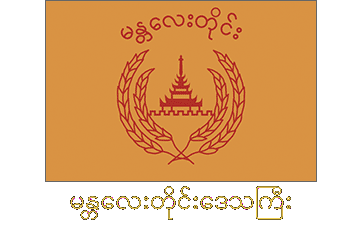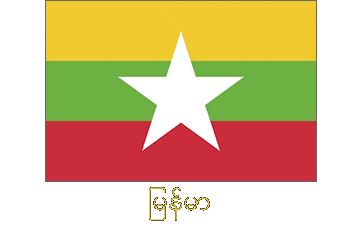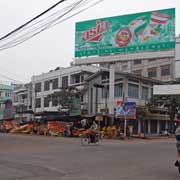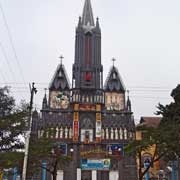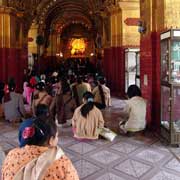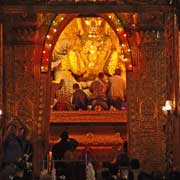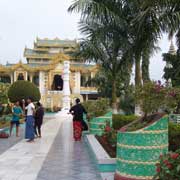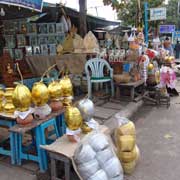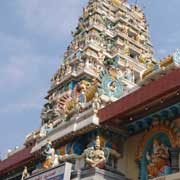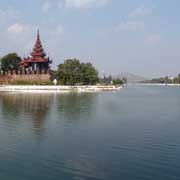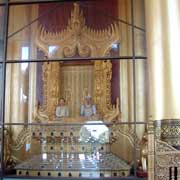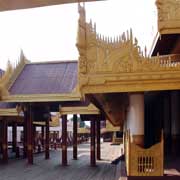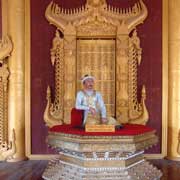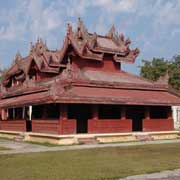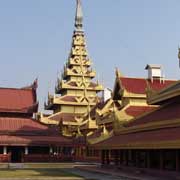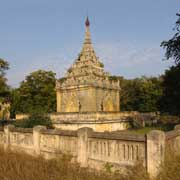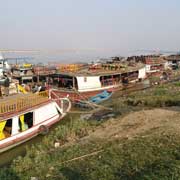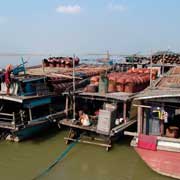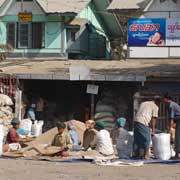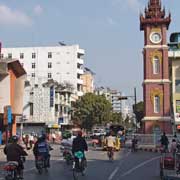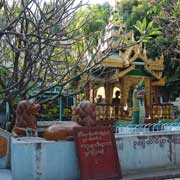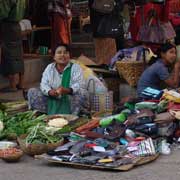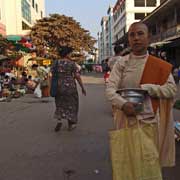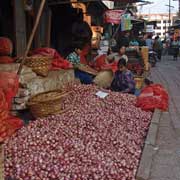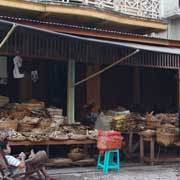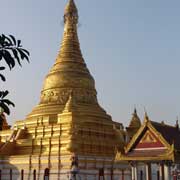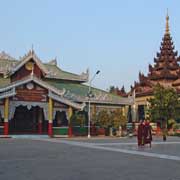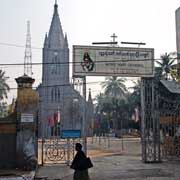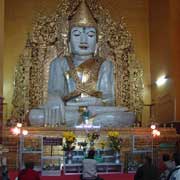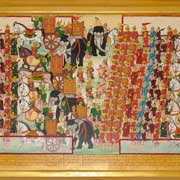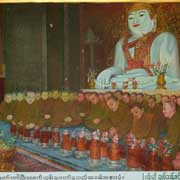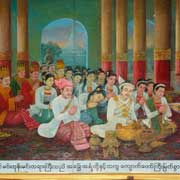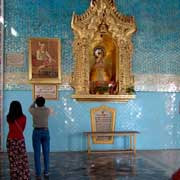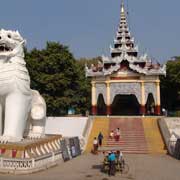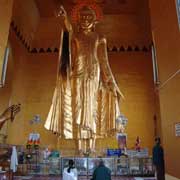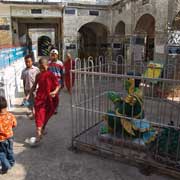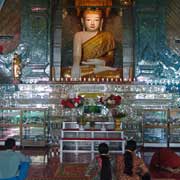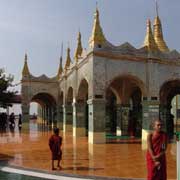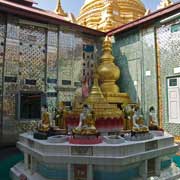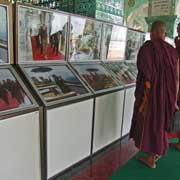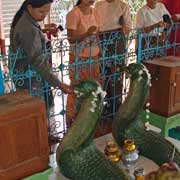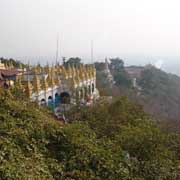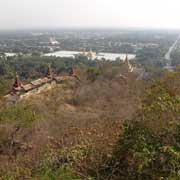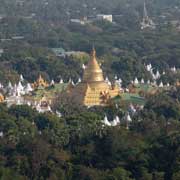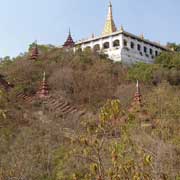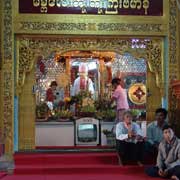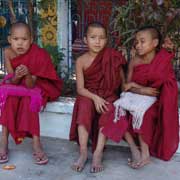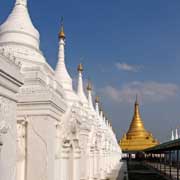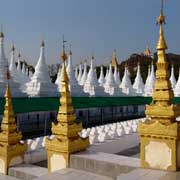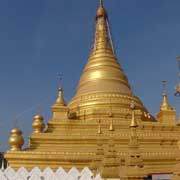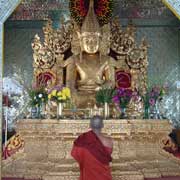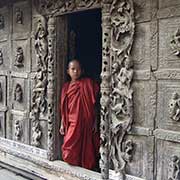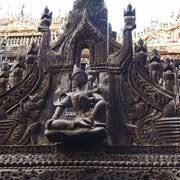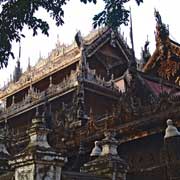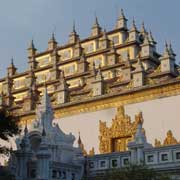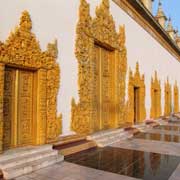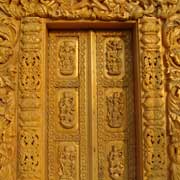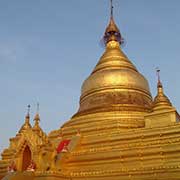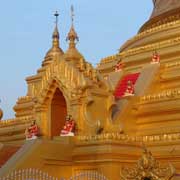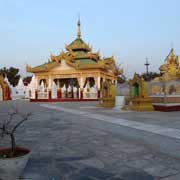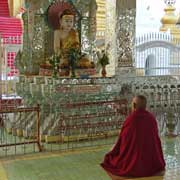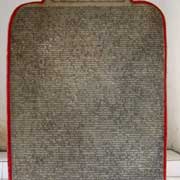Photos of Mandalay, the last Royal Capital, Myanmar
Mandalay, the last Royal Capital
Myanmar's second-largest city and the last Royal Capital is in the centre of the country, around 700 kilometres north of Yangon on the east bank of the Ayeryawady (Irrawaddy) River. It has around a million inhabitants and is the capital of Mandalay Region.
you may then send it as a postcard if you wish.
The city's name comes from Mandalay Hill; when it was founded at the foot of the hill by King Mindon Min on 13 February 1857, he called the royal city Yadanabon, "City of Gems". The former royal palace at Amarapura was dismantled that year and moved by elephants to its new location. Mandalay was the capital of independent Burma until it was annexed by the British: the Third Anglo-Burmese War from 7-29 November 1885 resulted in the occupation of Mandalay. Burma was formally annexed by the British on 1 January 1886.
The city is considered the centre of Myanmar's culture and Buddhist learning; Mahamuni Paya is one of the most important Buddhist sites. An 8 metre high, 900 tonne marble Buddha statue sits in Kyauktawgyi Paya, just south of Mandalay Hill; it is said 10,000 men spent 13 days spent transporting it from a canal to the temple. It was dedicated in 1865 with King Mindon Min in attendance, an occasion celebrated in a series of paintings at the site. Kuthodaw Paya, "the world's biggest book" was built during King Mindon's reign and has, on the grounds of its gilded pagoda, 729 "kyauksa gu" or stone-inscription caves with in each a marble slab, inscribed with a page of text from all 15 books of the Tripitaka, the Buddhist canon. Nearby Sandamani Paya has 1774 marble slabs inscribed with commentaries on the Tripitaka.
Mandalay Palace was constructed between 1857 and 1859 and was a city in itself, surrounded by walls of 3.2 kilometres long and 8 metres high walls and a 70 metre wide moat. The palace itself was at the centre of the complex and was the primary residence of the last kings, Mindon and Thibaw, until 28 November 1885 when British troops entered the palace. King Thibaw was taken prisoner and sent into exile. The British looted the palace and some of the items stolen are still on display in the Victoria and Albert Museum in London. They also burned down the Royal library, renamed the palace compound Fort Dufferin and used it to billet troops. In the Second World War the palace was utterly destroyed by Allied bombing, after Japanese had used the citadel as a supply depot. In 1989 reconstruction of the palace started and continued during the nineties, partly with forced labour, while concrete and corrugated metal roofs were used extensively; the original palace had been built from teak. One of the halls had been dismantled during King Thibaw's time and rebuilt outside the palace walls as the Shwenandaw Monastery; it is the only original building remaining.
Mandalay Hill, 240 metres high and north east of the city, is a major pilgrimage site and the four covered stairways up the hill leads past many pagodas and monasteries. Two huge "chinthe", stylised lion figures, guard the southern approach up the hill. There is a lot to see during the climb, including a large standing Buddha statue pointing at the city: it is said the Buddha visited this place and prophesied that in the year 2400 of his era a great city would be built here where his faith would flourish; and sure enough, that year was 1857 when King Mindon Min founded Mandalay!
